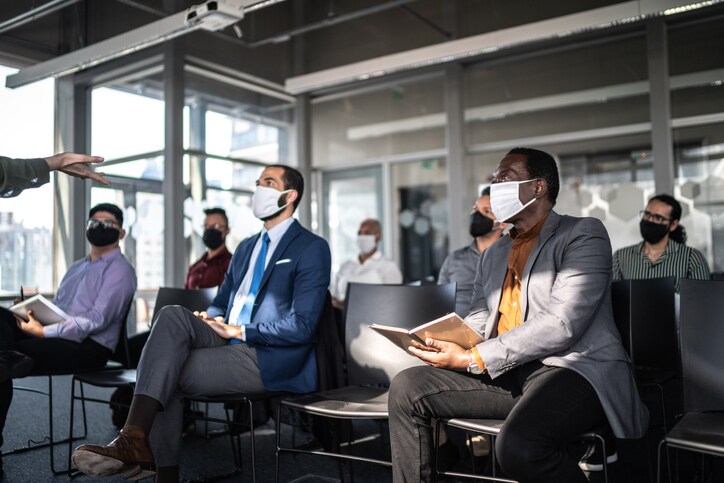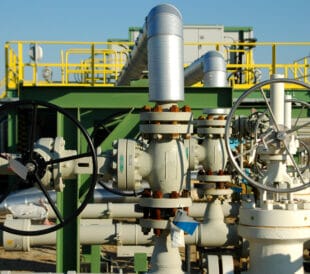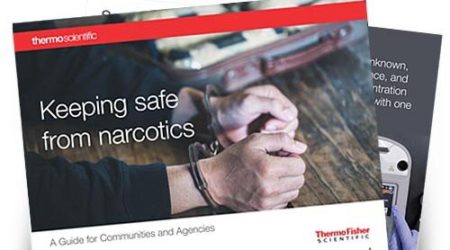 Solving a public health crisis like the SARS-CoV-2 pandemic is no easy feat. Although critical safety measures like diagnostic testing and screening; mask-wearing; social distancing; and increased vaccine availability have helped to restore some level of normalcy to our daily lives, COVID-19 will continue causing disruptions for the foreseeable future. Helping to minimize the potential spread of the virus requires a robust and multi-layered approach whereby in-air (or you could say airborne) pathogens are quickly and routinely detected from the individual to their surrounding environment.
Solving a public health crisis like the SARS-CoV-2 pandemic is no easy feat. Although critical safety measures like diagnostic testing and screening; mask-wearing; social distancing; and increased vaccine availability have helped to restore some level of normalcy to our daily lives, COVID-19 will continue causing disruptions for the foreseeable future. Helping to minimize the potential spread of the virus requires a robust and multi-layered approach whereby in-air (or you could say airborne) pathogens are quickly and routinely detected from the individual to their surrounding environment.
Environmental surveillance is a critical part of this overarching process, but it hasn’t entered the public consciousness to the same degree as other key measures like routine asymptomatic testing. Here we will explore what environmental surveillance is and how it can—and should—be used as part of a multi-layered approach to COVID-19 mitigation.
Explaining Environmental Surveillance
Diagnostic testing remains the central component of clinical diagnostics and treatment for individuals displaying symptoms consistent with COVID-19, or who may have been exposed to the virus. Meanwhile, screening or asymptomatic tests are used to identify unknown cases in wider populations. Both are critical for organizations struggling to stay open during the pandemic, particularly given the prevalence of different SARS-CoV-2 variants and ongoing vaccination reluctance—but neither can offer reliable insights into the efficacy of wider safety protocols. So, how can organizations validate their approach to COVID-19 mitigation?
Environmental surveillance aims to reduce elements of uncertainty in existing COVID-19 mitigation strategies by providing data by identifying airborne pathogens in the air. There are three primary methods of environmental surveillance, which offer insights into airborne pathogen presence: surface sampling, wastewater sampling, and air sampling paired with PCR testing.
Surface sampling naturally refers to the collection of microbial samples from frequently touched objects like door handles and worktops, and though there was some concern about transmission via contaminated surfaces in the early stages of the pandemic, studies have shown that the risk of infection here is extremely low.
Wastewater sampling is a large-scale form of environmental surveillance typically used to detect SARS-CoV-2 in sewage at municipal scales. Testing of wastewater samples can be time-consuming and results have lower spatial resolution, so although environmental surveillance of wastewater is an important complement to public health initiatives, the challenge is exact location for identification of pathogen presence, especially in larger facilities.
Air sampling paired with PCR testing is an increasingly important form of environmental surveillance used in COVID-19 mitigation strategies. We know that air transmission is the primary pathway for infection, that airborne pathogens can travel at a significant distance in-air, and that in-air pathogens can remain suspended long after an infectious person has left the area. The prevailing wisdom for much of the pandemic thus far has been to maximize ventilation, even if that means simply opening a window. But the actual requirements for reliably venting in-air pathogens are extremely precise.
Carbon dioxide (CO2) sensors are widely used for monitoring ventilation in indoor spaces and for general monitoring of HVAC systems—but the same challenges remain, what is in the air? With a CO2 sensor, you can gain a qualitative insight into ambient air quality, but cannot validate air composition.
How In-Air Pathogen Testing Works
Environmental surveillance of in-air pathogens works by collecting a representative aerosol sample from ambient air and fixing pathogens on a substrate, which is then analyzed via polymerase chain reaction (PCR). This is a highly sensitive technique which can provide results in some cases under four hours, offering actionable data that can help you identify the presence of airborne pathogens in your facility with unprecedented spatial resolution. Pairing an air sampler with PCR testing is the next step for COVID-19 mitigation, and for assessing in-air transmission of various pathogens in indoor settings.






Leave a Reply